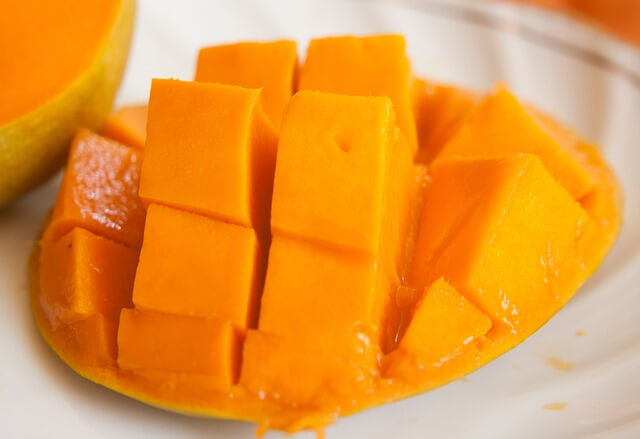How to Safely Feed Mango to Your Dog?
24.01.2021.
Your dog will most likely look at you and beg you for anything you might be eating. They don’t really care; they just want a piece of your food. While that might be a great source of many cute and funny videos you can find online, there are some human foods your dog really shouldn’t eat. You will have to resist their “puppy eyes” and not give in to their demands, at least with most foods.
If you love mango and have a dog, you probably wondered, “Can dogs eat mango?” There is some good news for your dog, and the answer to that question is - yes. Dogs can eat mango. In fact, it is beneficial and healthy for them. However, like with any other food you want to give to your dog, there are some things you should know before actually giving them mango.
Peaches are another delicious summer fruit, and owners often think about giving them to their dogs. Here is an article that can help you with that - Should You Let Your Dog Eat Peaches?
Is mango safe for dogs?
Yes, mango is safe for dogs, but there are some parts of it you should avoid. Make sure you remove the stem and the pit because they contain cyanide. Even the skin has some traces of cyanide, so before giving your dog mangoes, make sure you have removed the unsafe parts of the fruit.

The “fleshy” part of the fruit is what you want to feed your dog. It is delicious and offers plenty of health benefits your dog will reap. Mangoes are antioxidants and full of beneficial fiber and vitamins. They are also packed with sugar, so you should be careful not to overfeed your dog on mangoes. Here are some of the best nutrients in mango;
- Vitamin A - Vitamin a is crucial for the proper functioning of kidneys, heart, lungs, and several other organs. It is also vital for the immune system, reproductive system, and normal vision.
- Vitamin B6 - Vitamin B6, or pyridoxine, has several positive effects on the body. It reduces depression, prevents and treats anemia, helps the body store and use the energy from protein, and helps with hemoglobin production.
- Vitamin C - Vitamin C, or ascorbic acid, is one of the most commonly used supplements. It is essential for the production and repairing of body tissue.
- Fiber - Fiber is great and essential for a well-balanced diet. It is also a great way to help dogs suffering from diarrhea. Fiber will add bulk to the dog’s stool and absorb the excess fluids.
- Antioxidants - Antioxidants are one of the best things to help the body fight off free radicals. It is one of the best ways to prevent the development of cancer.
Do you know if dogs can eat blueberries? Read more about it in this article - Blueberries for dogs.
How to safely feed mango to your dog?
There are plenty of ways you could safely feed your dog mangoes. The two main things you need to look out for are what parts of it you give to your dog and how much. Let’s start with the first one.

Safe parts to feed to your dog
The only safe part of the mango is the delicious, “fleshy” part of the fruit. The skin can be problematic for dogs to digest, and it can quickly cause intestinal blockage. Plus, it contains traces of cyanide, which is toxic. Make sure you peel the mango before feeding it to your dog.
The second thing you need to remove is the stem. It also contains cyanide and poses a choking hazard. The same goes for the pit. Make sure you remove the pit and all traces of it on the inside of the fruit.
Is watermelon safe for dogs? You can read more about it in this article - Can Dogs Eat Watermelon?
How much is it safe to give to your dog?
The exact quantity will depend on the size of your dog. The golden rule when giving treats to your dog is 90-10. That means that 90% of your dog’s total food intake should come from their usual meal, and only 10% can come from treats. You should treat mango like a treat. It is rich in sugars, which can cause diabetes, so you don’t want to overfeed it to your dog.
You should never give more than a quarter cup of fresh mango to a large dog. The smaller the dog, the less mango you should give them. The high sugar value can quickly lead to an upset stomach, which will result in diarrhea or vomiting.
If you feed your dog mangoes for the first time, keep an eye on them and see if they get an allergic reaction. Check for signs of hiving, sneezing, scratching, sneezing, swelling, and redness of the skin. If you notice any of these signs, take your dog to the vet.
Mango is a delicious fruit that your dog will undoubtedly enjoy and love. Make sure you prepare it properly and don’t overfeed them. It is also a good idea to check with your vet before introducing anything new to your dog’s diet.
World Dog Finder team







Share